If you’re like most dog owners, you want to do everything in your power to keep your furry friend healthy and happy. But if you’ve been noticing a lot of dandruff on your dog, you may be wondering what’s going on. In this blog post, we’ll discuss the causes of dandruff in dogs, as well as some solutions that can help get rid of it for good.
Dogs have dandruff for 15 different reasons. From bacteria and fungus, dietary imbalance & allergies to stress, excessive grooming, genetics, dry air, parasites and more. The remedies include soothing shampoos, humidifier, neem paste, baking soda and dietary supplements. Remember to consult the vet to rule out underlying diseases.
What Is Dandruff?
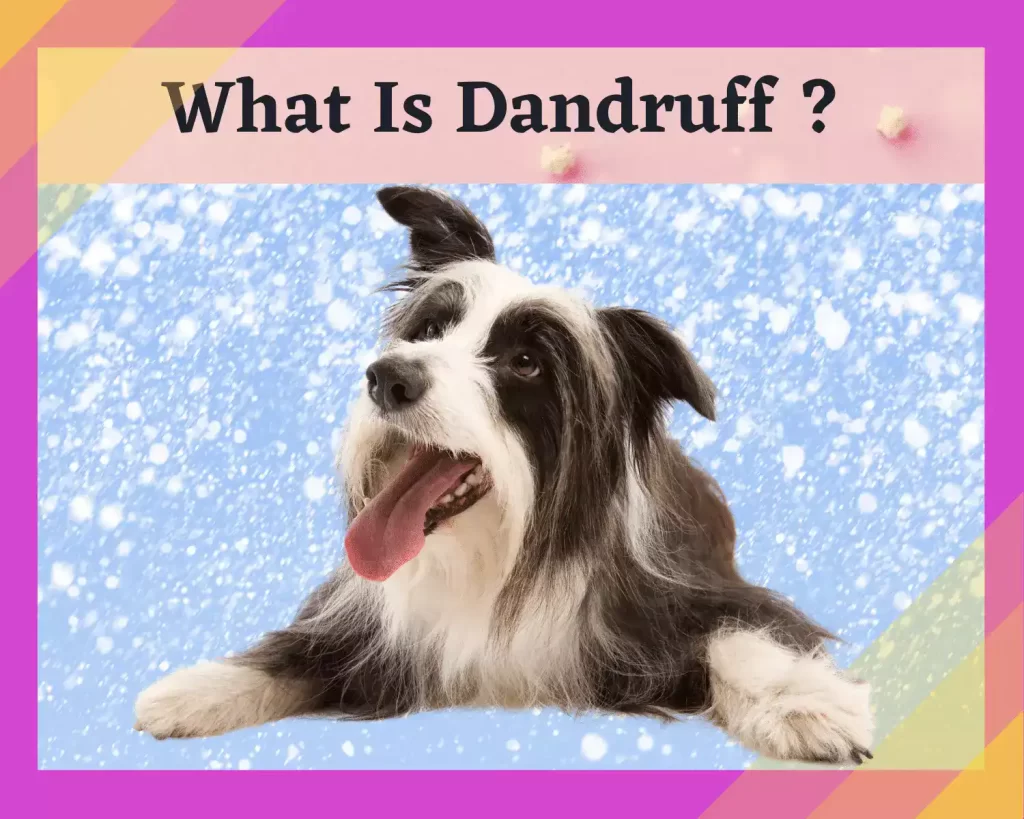
Dandruff in dogs is technically called seborrheic dermatitis. It’s a skin condition that causes the dog’s skin to flakes off in little pieces. The good news is that it’s not contagious and usually not painful for the dog. Dandruff is a skin condition that causes the production excessive amounts of oil.
This oil makes the skin flakes stick together, which can then be easily seen on your dog’s coat. To explain further, the skin produces too many outer layer cells than required. Normally the skin of the dog is the is supposed to renew every three weeks.
However, in the case of dandruff, the renewal occurs every week. This makes the skin flake. This process also increases the production of sebum from the sebaceous glands.
https://www.msdvetmanual.com/dog-owners/skin-disorders-of-dogs/seborrhea-in-dogs
Types Of Dandruff
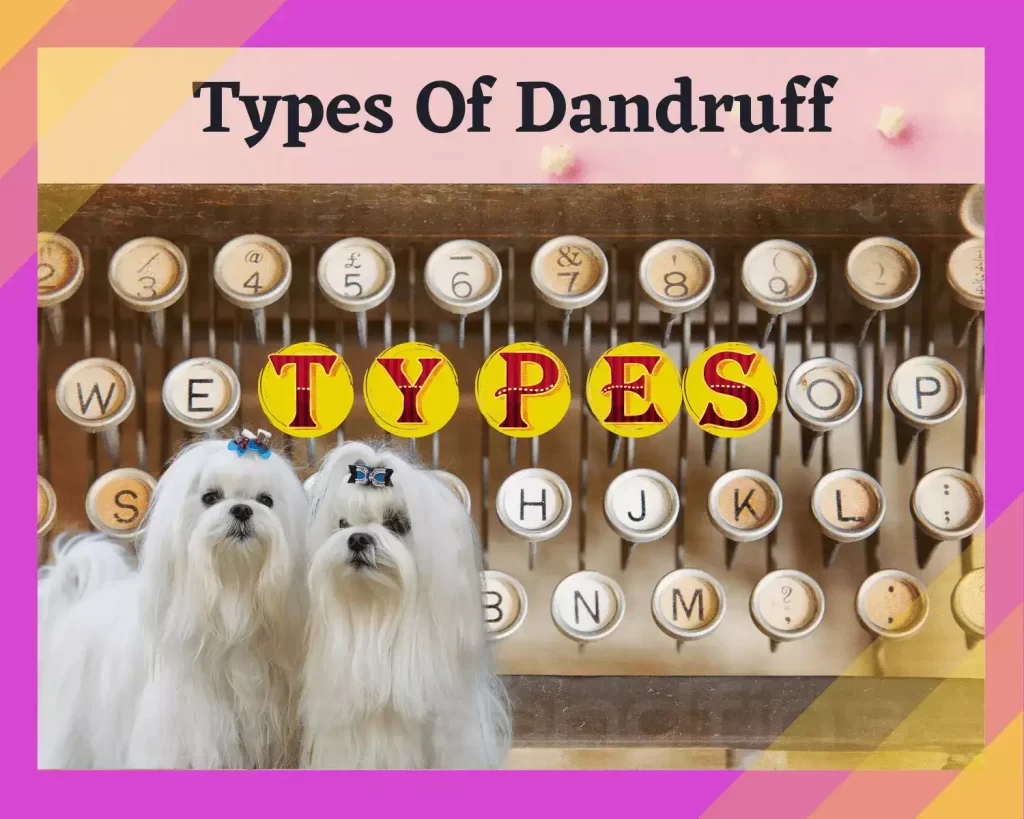
Seborrhea Oleosa :
Seborrhea oleosa is a type of dandruff that affects dogs. It is caused by an overproduction of sebum, which is a type of oil that helps to keep the skin and coat healthy. However, when there is too much sebum, it can build up on the skin and coat, leading to dandruff. Seborrhea oleosa is more common in dogs with oily skin, but it can also occur in dogs with dry skin.
Seborrhea Sicca
Seborrhea sicca is a type of dandruff caused by a lack of sebum, an oily substance that normally lubricates the skin and hair. This condition results in a dry, flaky skin rash that often causes itching.
The essential difference between the two is that the former is related to excess oil production and the latter is related to lesser production. One is oily and the other is dry.
What Are The Symptoms Of Dandruff?
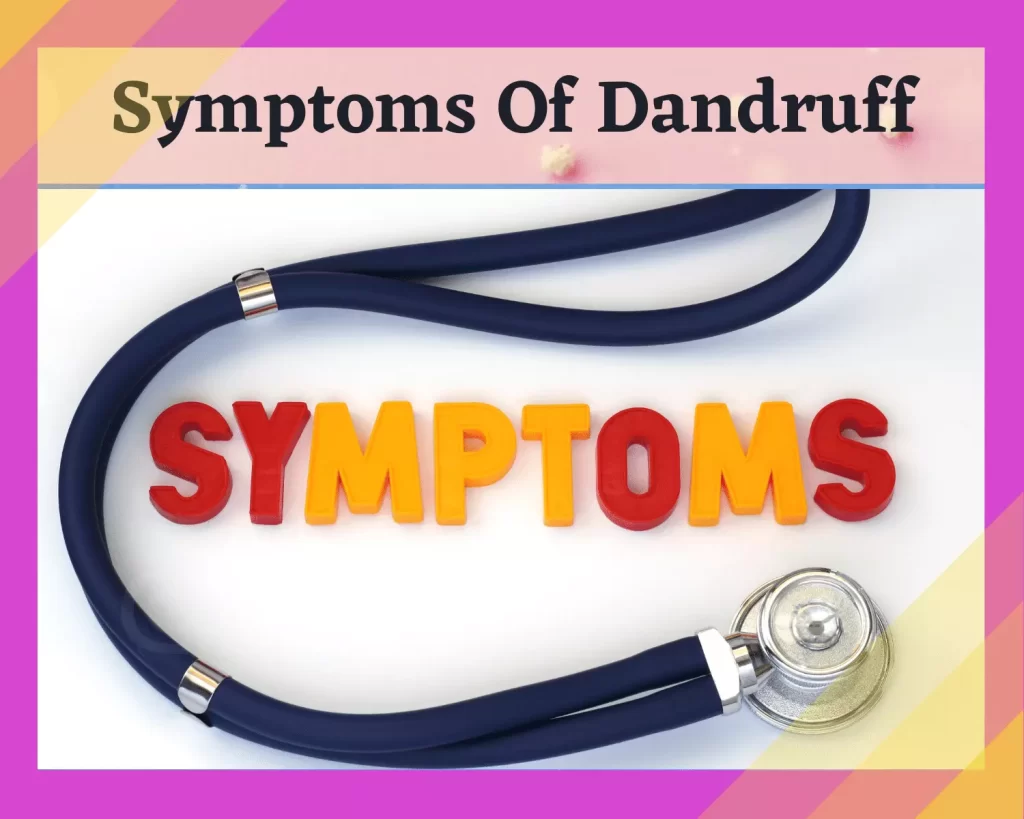
Small White Flakes
One of the symptoms of dandruff is small white flakes. Dandruff is caused by a build-up of sebum, an oily substance produced by the sebaceous glands. When the sebum mixes with dead skin cells, it can form a white, flaky substance known as dandruff.
There can be a few different causes of white flakes in dogs, but the most common is seborrhea oleosa, which is a type of skin inflammation. It can be caused by allergies, hormonal changes, or yeast overgrowth, and results in excessive oil production and scaling on the skin.
Scratching
Dogs scratch when they have dandruff for the same reason that people do: to get rid of the itchiness and flakes. Just like with people, dandruff is usually caused by dry skin, or a reaction to a new shampoo or conditioner.
In rare cases, it can be a sign of a more serious medical problem, like allergies or skin infections. If your dog’s scratching becomes excessive or you see any redness or bald spots, make sure to take them to the vet for a check-up.
Excessive Licking
Dogs lick their skin when they have dandruff because the flakes of dry skin are itchy and uncomfortable. The licking helps to soothe the itch and also removes any excess dead skin cells.
Additionally, dogs may lick their skin when they’re anxious or stressed, since licking is a calming behavior for them. Dogs lick their skin when they have dandruff because the flakes of skin bother them.
The saliva helps to loosen and remove the flakes. Additionally, the licking might provide some relief from the itchy feeling.
Biting Skin
Your dog might be biting its skin when it has dandruff because the skin is irritated and the dog wants to relieve it’s itchy feeling. The itching and scratching can cause dogs to become obsessive and gnaw at their skin, which only makes the dandruff problem worse.
Dogs can also bite their skin to try and loosen the excess flaky accumulation on skin. If your dog is biting it’s skin then it means the irritation is intolerable and needs attention. It also means that the dandruff is increasing and as a result the itchiness is causing discomfort to the dog.
Odor ln Skin
Dogs have odor in the skin when they have dandruff because the yeast that lives on their skin thrives in moist environments, and the scalp is a particularly good place for it to grow.
Dandruff is often accompanied by a strong musty or cheesy smell, and this smell comes from the yeast that’s growing on the dog’s skin.
Dogs with dandruff have dry skin, and the dry skin leads to a build-up of oils and cells on the surface of the skin. These oils and cells mix with bacteria and sebum (a fatty secretion from the sebaceous glands) to create an unpleasant odor.
Hair Loss
There are a few reasons why dogs may have hair loss due to dandruff. One reason could be that the dog is not getting enough nutrients in their diet, which can lead to poor skin and coat health. Another possibility is that the dog has an underlying skin condition such as allergies or seborrhea.
If your dog is experiencing hair loss and you suspect dandruff may be the cause, it’s best to consult with your veterinarian to rule out any other health issues and develop a treatment plan.
Redness
Dogs have redness in the skin when they have dandruff for a few reasons. The first reason is that the dandruff itself is usually red or brown, so when it falls on the dog’s fur, it can leave behind a reddish tinge.
Secondly, dandruff can be caused by allergies or other skin conditions, which can also lead to redness and irritation.
Finally, dogs tend to scratch at their dandruff-affected areas quite frequently, which can cause more redness and irritation.
Causes
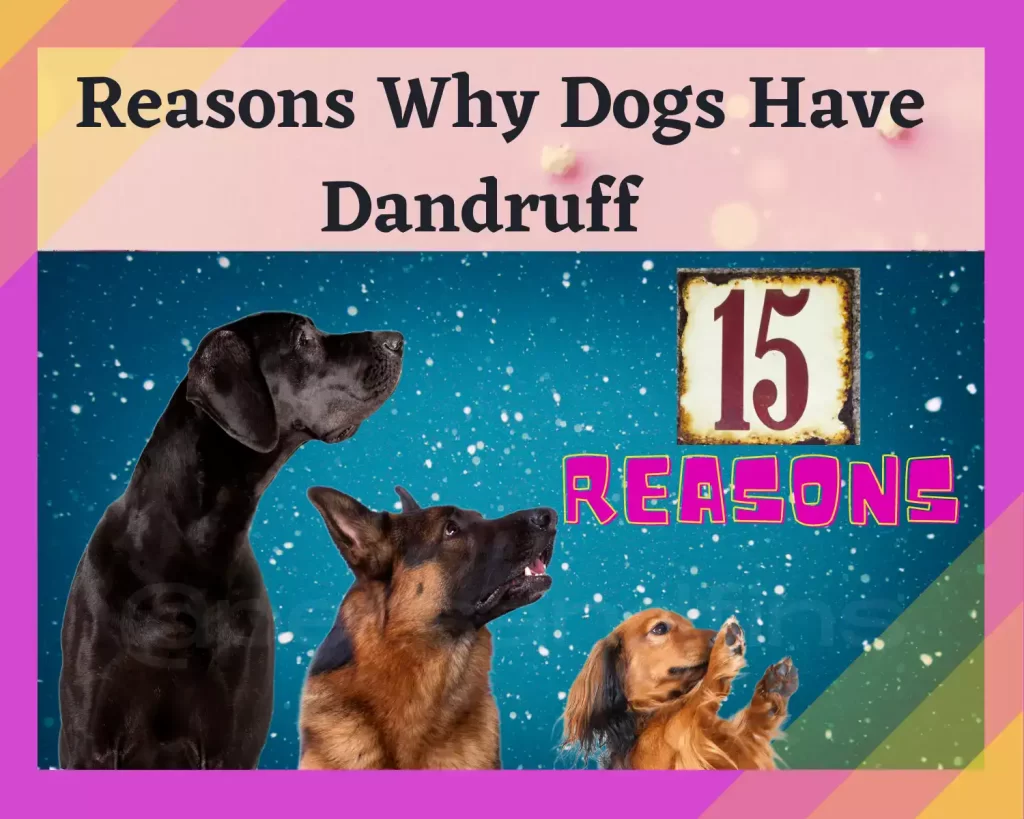
Bacterial And Fungal Infections
Dandruff in dogs is usually caused by a bacterial or fungal infection. The most common type of fungus that causes dandruff in dogs is Malassezia pachydermatis, and the most common type of bacteria that causes dandruff is Staphylococcus pseudintermedius.
Fungal and bacterial infections are the most common causes because they can thrive in the dog’s warm, humid body environment, and they can also cause inflammation and irritation.
Dietary Imbalance
Dandruff in dogs is usually caused by a dietary imbalance, specifically a deficiency in omega-3 fatty acids and vitamin E. Dogs that don’t get enough of these nutrients in their diet are more prone to developing dandruff, as well as other skin problems like dry skin and itchy skin.
This is because both of these nutrients play an important role in maintaining the health of the dog’s skin. Omega-3 fatty acids help to keep the skin moisturized, while vitamin E helps to protect it from damage caused by free radicals.
Allergies
Dandruff in dogs is caused by a number of factors, but allergies are one of the most common. Allergies can cause the skin to become dry and irritated, which leads to flaking and dandruff.
One theory is that the high levels of inflammation caused by allergies can lead to a condition called seborrhea, which is characterized by over-production of oil on the skin and scalp.
This extra oil can mix with dead skin cells and bacteria on the scalp, causing dandruff to form.
Stress
Dandruff in dogs is caused by a variety of factors, including stress. One way that stress can cause dandruff is by depleting the body’s supply of omega-3 fatty acids.
Omega-3 fatty acids are essential for maintaining healthy skin and coats, and when they’re lacking, the skin can become dry, flaky, and irritated – which can lead to dandruff.
Another way that stress can cause dandruff is by reducing the level of vitamin E in the body. Vitamin E is a fat-soluble vitamin that helps to keep skin moisturized and prevents dryness and scaling.
When levels of vitamin E are low, the skin can become dry and cracked. When a dog is stressed, their body uses up omega 3 fatty acids and vitamin E at an accelerated rate.
Excessive Grooming
Dandruff in dogs is usually caused by excessive grooming, most commonly bathing the dog too many times. When you bathe your dog, the shampoo and water strip away the natural oils from their skin, which can cause the skin to become dry and flaky.
In addition, if you’re not careful when you’re brushing your dog’s hair, you can also cause some flaking.
Genetics
There are a few different ways that genetics can cause dandruff in dogs. One is by causing the dog to produce too much sebum, which is the oily substance that helps keep their skin and fur healthy. When there’s too much sebum, it can build up on the skin and cause flakes of dead skin to form.
Another way genetics can cause dandruff is by making the dog’s skin overly sensitive to things like dust mites or other allergens.
This can also lead to an overproduction of sebum and subsequent formation of dandruff flakes. Finally, some dogs simply have a genetic predisposition to dry, flaky skin, which can also result in dandruff.
Dry Air
Dandruff in dogs can be caused by a dry environment. The air in your home can be very dry in winter months, and this can cause dandruff on your dog’s skin. In addition, low humidity levels can also contribute to problems like skin cracking, itchy skin, and excessive shedding.
Parasites
There are three main types of parasites that can cause dandruff in dogs – biting lice, sucking lice and the cheyletiella mite. These parasites feast on the skin flakes and oils that are produced by the dog’s scalp, which can lead to an increase in dandruff.
In addition, some of these parasites can also cause hair loss and a general deterioration in the dog’s health. If you think your dog may have a parasitic infection, it’s important to take them to a veterinarian for treatment. The vet will be able to identify the specific parasite causing the problem and prescribe an appropriate treatment.
Harmonal Conditions
Dandruff in dogs is caused by a variety of factors, including dry skin, poor nutrition, and allergic reactions. Harmonal conditions can also play a role in causing dandruff, as they can disrupt the natural balance of oils in the skin. This can lead to an overproduction of skin cells, which can then flake off and become dandruff.
Weakened Immunity
A weakened immune system can cause a number of problems for dogs, including dandruff. When the body’s immune system is compromised, it cannot fight off infection as effectively, and this can lead to skin problems like dandruff.
Additionally, a dog with a weakened immune system may also have trouble keeping its coat clean and healthy, which can contribute to dandruff.
Hypothyroidism
Dandruff in dogs is often caused by an overgrowth of yeast on the skin. And guess what? Yeast thrives when there’s an increase in blood sugar (which is common in hypothyroidism). So when blood sugar levels are high, the yeast grows uncontrolled and causes dandruff.
Additionally, since the thyroid gland regulates metabolism (including how quickly the body burns energy), dogs with hypothyroidism often have a slower metabolic rate.
This means that their skin cells don’t develop as quickly, which can also lead to dandruff.
Cushing’s Disease
Cushing’s disease is a condition that affects the adrenal glands and can lead to an overproduction of the hormone cortisol. One of the symptoms of Cushing’s disease is an increase in sebum production, which can result in dandruff in dogs. In addition, Cushing’s disease can also cause hair loss, so the dandruff may be more noticeable.
Ringworm
Ringworm is a fungal infection that causes dandruff in dogs. The fungus invades the hair follicles and sebaceous glands, causing scaling and flaking on the skin.
In some cases, the infection can spread to other parts of the body. It is important that this is treated early. Dogs with ringworm should also be kept out of contact with other animals to prevent the spread of infection.
Under Grooming
Dandruff can also be caused by a lack of grooming, which leads to accumulation of oils and dead skin cells on the skin, which can also cause flakes. Your dog may not be grooming itself when it is overweight or has stiffness.
The other circumstance can be when you are under grooming your dog causing accumulation of cells thus leading to dandruff.
Auto Immune Disease
There are a few different ways that autoimmune disease can cause dandruff in dogs. However, auto immune disease is a very rare condition. For one, the immune system may attack the hair follicles, causing them to become inflamed and produce less oil.
This can lead to dry, flaky skin and dandruff. Additionally, autoimmune disease can also cause the body to produce antibodies that attack the sebaceous glands, which are responsible for producing sebum (oil). This can also lead to dry skin and dandruff.
Finally, some autoimmune diseases can cause the body to produce chemicals that trigger inflammation. This inflammation can also lead to dry skin and dandruff.
What To Do If Your Dog Has Dandruff?
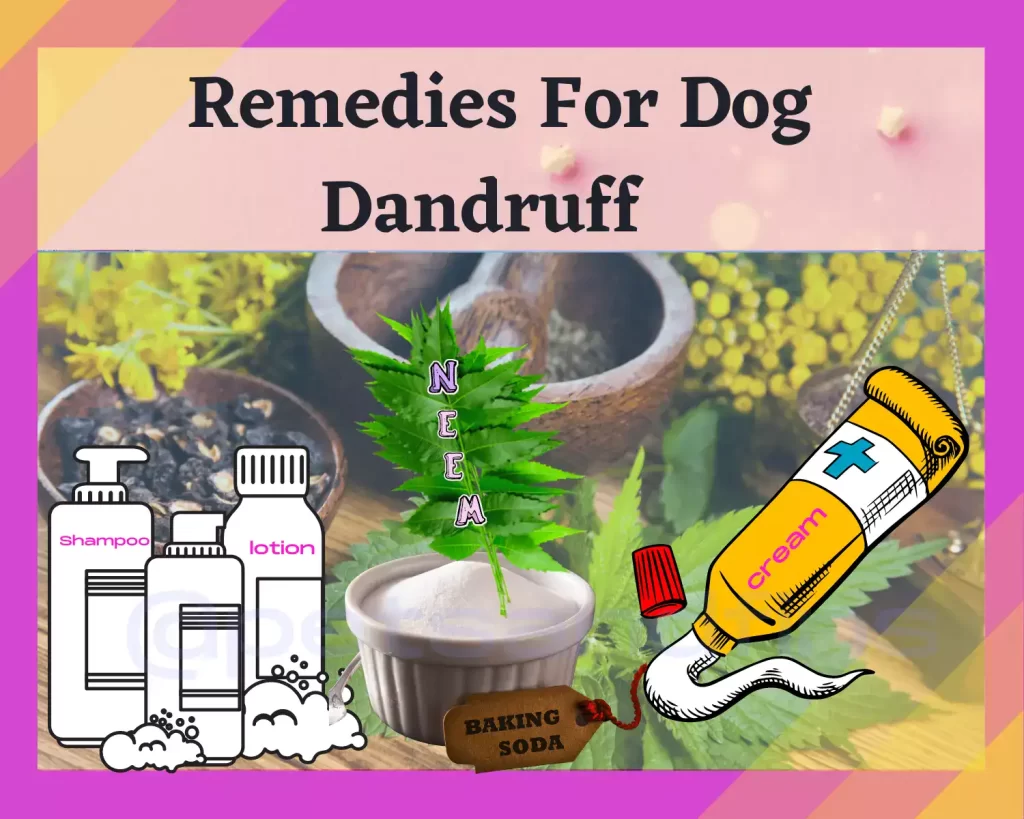
Grooming
One of the ways that grooming can reduce dandruff in dogs is by increasing the production of sebum. Sebum is a natural oil produced by the sebaceous glands, and it helps to keep the skin and coat healthy.
When the sebaceous glands are not producing enough sebum, the skin can become dry and flaky, which can lead to dandruff.
Brushing helps to stimulate the sebaceous glands and increase sebum production, which helps to keep the skin and coat healthy and reduces dandruff.
Soothing Shampoo
There are a few things that soothing shampoos can do to reduce dandruff in dogs. One is that they can help restore the natural oils in the skin and coat. This is important because dandruff is often caused by a lack of moisture.
Another thing that soothing shampoos can do is to provide some anti-inflammatory properties that can help to reduce the irritation that is often associated with dandruff. Oatmeal shampoo, in particular, can be very effective at reducing dandruff symptoms.
Humidifier
Dandruff in dogs is often caused by a dry scalp, and a humidifier can help to restore the natural oils and moisture to the scalp, which will help to reduce or eliminate dandruff. When the weather is cold and dry, or if a dog doesn’t drink enough water, their skin can become dried out and flaky.
A humidifier can help to add moisture back into the air, which can help to reduce dandruff. Just be sure to clean your humidifier regularly, as humidifiers can also be a breeding ground for mold and bacteria.
Vet Consult
When it comes to our beloved canine companions, we want to do everything we can to ensure their health and happiness. Sometimes this means taking them to the vet for a check-up, even if they seem perfectly healthy.
If your dog is suffering from dandruff, then consulting with a vet is especially important, as there may be an underlying medical issue causing the flaking.
Conditioner For Long Hair Dogs
Conditioner can help to reduce dandruff in dogs by providing lubrication and moisture to the skin and coat. This can help to prevent the skin from becoming dry and irritated, which can lead to dandruff. Conditioners can also help to remove any build-up of oils and dirt that may be contributing to dandruff.
Protein & Vitamin A
There’s a few different ways that protein and vitamin A can reduce dandruff in dogs. Protein helps to strengthen the hair shaft, while vitamin A helps to keep the scalp healthy and free of flakes and build-up.
The proteins help to fill in any cracks or rough spots on the surface of the skin, while the vitamin A helps to soothe and protect the skin. Together, they create a synergistic effect that helps to reduce dandruff and keep your dog’s coat looking healthy and shiny.
Fish Oil
The fatty acids found in fish oil have anti-inflammatory and anti-microbial properties, which may help to reduce dandruff in dogs. Fish oil can also help to moisturize the skin and promote a healthy coat.
Fish oil is rich in omega-3 fatty acids, which have anti-inflammatory properties.
Anti Dandruff Shampoo
There are a few different ways that anti-dandruff shampoos work to reduce dandruff in dogs. One common method is by using special ingredients that help to break down the bonds that hold the dead skin cells together.
This can help to prevent the formation of new dandruff and also make it easier to brush out existing dandruff. Another popular way that these shampoos work is by killing the yeast that often causes dandruff. This can help to soothe the scalp and reduce irritation.
Some shampoos also contain moisturizing ingredients that can help to hydrate the skin and prevent further flaking.
Anti Dandruff Creams Or Lotions
There are a few different ways that anti dandruff creams and lotions can reduce dandruff in dogs. One is by reducing the amount of sebum, or oil, on the skin. This can help to reduce the amount of shedding and prevent flakes from forming.
Another way is by hydrating the skin and helping to keep it healthy. Finally, some anti dandruff products contain ingredients that help to soothe the skin and relieve irritation. This can help to decrease itching and make your dog more comfortable.
Proper Grooming Tools
Regular brushing with the proper tools can help remove dandruff and decrease its occurrence. Brushing also stimulates the skin, which helps to promote healthy circulation and skin cell turnover. A healthy coat is less likely to develop dandruff.
Regular brushing helps distribute the dog’s natural oils throughout the coat, which helps keep the skin healthy and reduces dandruff. Brushing also removes dead skin cells and other debris from the coat, which can help prevent accumulation of dandruff-causing oils and flakes.
Neem Paste (Natural Remedy)
There are a few ways that neem paste can help reduce dandruff in dogs. First, the paste can help kill any fungus or bacteria that may be causing the dandruff. Neem can also ward off the external parasites since they cannot tolerate neem.
Second, the paste can help soothe and moisturize the skin, which will help to prevent dryness and flaking. Finally, neem extract is also a natural anti-inflammatory and analgesic, so it can help relieve any itchiness or irritation that may be associated with dandruff.
Method Of Usage:
- Wash fresh neem leaves thoroughly
- Grind it into smooth paste with purified water
- Apply it on affected areas (use immediately)
- Wash off thoroughly with oatmeal shampoo after 15 minutes
Even if your dog licks the neem paste (very unlikely) it will only kill bad bacteria in the body.
Baking Soda Bath (Home Remedy)
Baking soda can help reduce dandruff in dogs because it has a mild exfoliating effect that helps to remove dead skin cells from the scalp. This can help to prevent the accumulation of oils and flakes on the scalp, which can lead to dandruff.
Baking soda also has a slightly alkaline pH, which can help to neutralize the acidity of sebum (an oily substance produced by the sebaceous glands) and thereby reduce its ability to cause scalp irritation.
Finally, baking soda is a gentle, natural cleanser that will not strip away essential oils from the scalp like some harsh chemical shampoos can. All of these factors make baking soda an effective treatment for dandruff.
Method Of Usage:
- Take 5 table spoons of Baking soda
- Take 1 Litre of purified water
- Take 5 Teaspoons of coconut oil ( warm up the oil a wee little)
- Mix the baking soda in the water. (Use immediately)
- Add the coconut oil
- Spray on affected areas
- After 20 minutes, wash with plain water
- Then use a mild soothing shampoo (if needed).
Wrapping Up
So if your dog is scratching a lot or you’ve been finding dandruff on their bed, furniture or even your clothes, it might be time to take a closer look. As we’ve seen, there can be many different causes of dandruff in dogs and the remedies vary depending on the underlying cause.
Always consult with your vet to rule out any serious underlying diseases before starting any treatment at home. With 15 potential reasons for those pesky flakes, hopefully one of these solutions will help get your dog (and your house) back to being flake-free!
